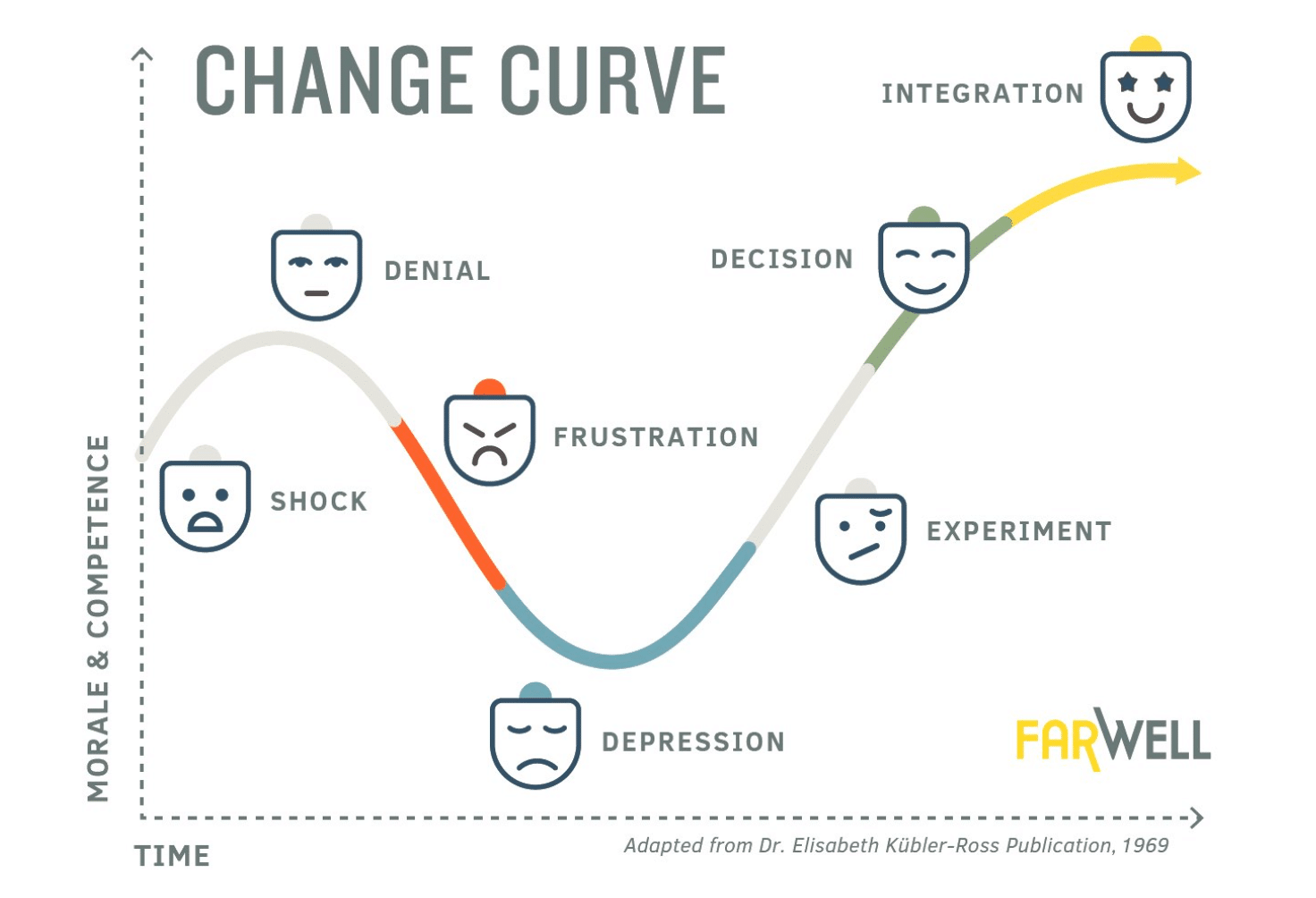From Shock to Integration: A Journey Through the 7 Emotional Landscapes
When we embrace the Kübler-Ross change model, we don’t just make peace with change; we learn to lead the dance.

The idea that everyone loves change might raise a few eyebrows at first. I mean, who hasn’t heard someone groan at the mere mention of switching desks, let alone bigger life upheavals? But stick with me here. The fact is, we all kind of dig change, just on our own terms. It’s like ordering a coffee; we all have our specific preferences – some want it black, others with a swirl of caramel and an extra shot of espresso.
Dr. Elisabeth Kübler-Ross, in her groundbreaking study in 1969, sketched out a map through the maze of change that still holds up today. It’s not about the change itself but how we dance through its seven steps. And oh, it’s a dance, alright. Sometimes it’s graceful, and sometimes it’s stepping on toes.
1. Shock – First, it’s the “Whoa, what?” moment. Picture walking into your favorite coffee shop only to find it’s been transformed into a sushi bar overnight. That initial jolt? That’s shock. Our brains stop, trying to process the new reality that’s just dropped in our laps.
2. Denial – Next up, we’ve got denial, the “Nope, not happening” stage. It’s like insisting on ordering a latte in the sushi bar, refusing to acknowledge the change. We’re clinging to the familiar because, let’s face it, the known feels cozy and safe.
3. Frustration – Then, frustration barges in. It’s when reality sinks in, but we’re not happy about it. Imagine realizing that sushi bar isn’t a pop-up and your latte days here are done. You’re irked, annoyed, and everything in between because change is starting to feel like a personal affront.
4. Depression – This is the point where the weight of change presses down on us. The sushi bar’s novelty wears off, and all we can think about is how much we miss that latte. It’s a low point where change feels more like a loss than an opportunity.
5. Experiment – But then, a shift happens. We start to experiment. Maybe we try a California roll or venture into the world of sashimi. It’s about testing the waters, seeing if maybe, just maybe, there’s something in this new reality for us.
6. Decision – The experiment leads us to the decision phase. It’s where we start to see the light at the end of the tunnel. Perhaps sushi isn’t so bad, or maybe we discover a new coffee shop that’s even better. We begin to make choices that align with our new reality.
7. Integration – Finally, we reach integration. The change that once rocked our world is now part of our daily routine. That sushi bar? It’s our new go-to. We’ve woven the change into the fabric of our lives, finding our new normal.
Each step of this journey is universal yet deeply personal. We all waltz through these stages at our own rhythm, reacting in ways that are as unique as our coffee orders. And it’s this process that highlights the beauty of change. It’s not about the end destination but how we grow, adapt, and evolve. We learn about ourselves, our resilience, and our capacity to embrace new chapters in our lives.
So, yes, we all like change. But it’s the “how” that defines our experience. Understanding these stages isn’t just about navigating life’s shifts; it’s about appreciating the complexity of human adaptation. We’re all crafting our own stories of change, mixing and matching the steps as we go along, finding our way through the chaos with our own brand of grace.
When we embrace the Kübler-Ross model, we don’t just make peace with change; we learn to lead the dance. Whether we’re stepping into shock or gliding into integration, it’s all part of the grand ballet of life. And that, my friends, is how we all come to not just accept but genuinely like change, each in our own way.
